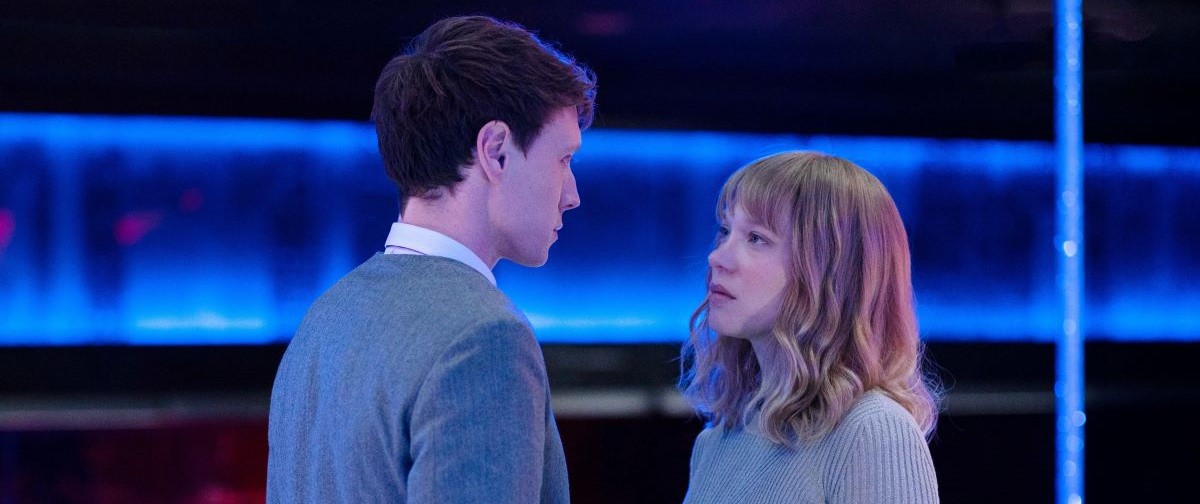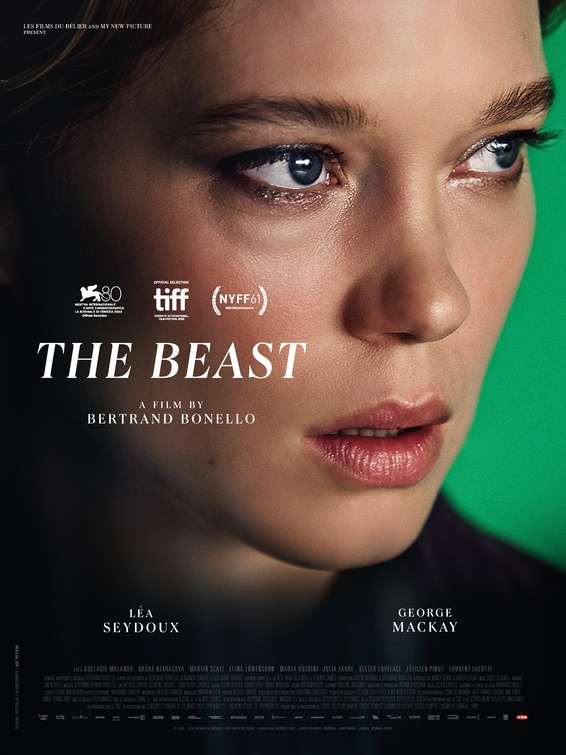The launching pad for Bertrand Bonello’s new picture “The Beast” (“La Bete”) is a 1903 short story by Henry James called “The Beast in the Jungle.” Seen by some James scholars as an autobiographical expression of rue for a life of inaction, it treats the case of John Marcher, who confides in his acquaintance May Bartram that he lives in fear of an unnamable catastrophe that could upend his life, and the life of anyone close to him. She claims to get what he’s talking about.
“‘You mean you feel how my obsession — poor old thing — may correspond to some possible reality?’
‘To some possible reality.’
‘Then you will watch with me?’”
And so May does. And Marcher’s fear translates into a passivity that compels him to hold May at arm’s length for the rest of his life. At the end of the story, he mourns a love he never allowed himself to have and understands that the catastrophe was his own fear.
In Bonello’s film, the fear belongs to the popular Parisian concert pianist Gabrielle Monnier (Lea Seydoux), who, around the time of the great 1910 flood of France’s City of Lights, confesses this fear to Louis (George MacKay), a young Englishman with whom she soon begins a tentative liaison. But the trouble they encounter has nothing to do with Gabrielle’s reticence to enter into a romantic relationship with Louis—although that does exist.
Bonello’s not here to tell us that the only thing to fear is fear itself. He’s here to tell us to be afraid—be very afraid. What he delivers is not just a densely packed art movie but the most potent horror picture of the decade so far. A vision of three (actually four) nightmare times, all of them in the same vexed world.
The cataclysms that fall upon Gabrielle—played by a superbly controlled and often heartbreaking Lea Seydoux—aren’t spiritual or conceptual (well, of course, at first, they are), they’re “real,” or Real. They’re corporeal/physical, or simulations of the corporeal physical. And they’re unavoidable. Boy oh boy can you not stop what’s coming. Close that browser window, rewind that video, press mute on the sound system, reset the house alarm, none of it will do you any good. Not even an alteration in the fabric of reality itself—and this seems to occur at least a half dozen times in the picture—will stave off horror. The beast isn’t in the jungle, it’s in the house, and it’s in the air we can only barely breathe when the movie gets to 2044. It is in us; it is us.
Sounds cheerful, right? Well, what can I tell you? Bonello has a way of throwing us into an enhanced vision of the degrading noise of contemporary life that’s all the more engaging for being so even-handed and deliberate. I mentioned three timelines that are actually four—the movie is framed, kind of, by a green-screen session in which Seydoux, possibly playing Gabrielle, possibly playing herself, is coached through paces for a scene in which she actually apprehends “the beast” and lets out a blood-curdling scream. The image degenerates into a gorgeous abstract mural of pixels. Digitization is here both a source of ravishing sights and sounds and an Excedrin headache of aural and visual glitch. The movie then bounces through three time periods: 1910, 2044—where Gabrielle’s character seeks to abolish her reincarnation torment through a “DNA purge”—and most terrifyingly, 2014, wherein “Gabby” is housesitting in L.A. and targeted by the angry incel version of MacKay’s Louis—Louis Lewansky, who’s 30 and never been with a woman despite his “magnificence,” and who’s now getting ready to avenge himself.
Dolls are a recurring motif here—there are old-fashioned ones made for fans of the pianist Gabby, and unhelpful talking doll in the Hollywood house, and a walking, talking A.I. helper (played by Guslagie Malanda, as impressive here in a relatively small role as she was in the lead of 2022’s “Saint Omer”). An electrical fire figures in the 1910 sequence; a malware attack on a laptop is one of the insane blowups in the 2014 scenario. There are bits and pieces here that feel Lynchian, especially in the Los Angeles scenes, during which Gabrielle is fascinated/repulsed by a TV singing contest show that feels like it might have sprung full blown from the creator of “Twin Peaks.” Then there’s the fact that the love song recurring throughout shows up at the very end, sung in its original version by, well Roy Orbison. But unlike Lynch, Bonello has a decidedly un-obscure point to make. Mainly about how the pursuit of the authentic in life is invariably thwarted by roadblocks of humanity’s own making. (Although one supposes that the eighth episode of the 2018 “Twin Peaks” season treated that theme in a relatively unambiguous way.)
“There must be beautiful things in this chaos,” Gabrielle tries to reassure the movie’s scariest version of Louis at one point. Bonello, and this movie’s, greatest dread is that someday a terrible order will emerge, one that will make whatever beauty remains disappear.




















